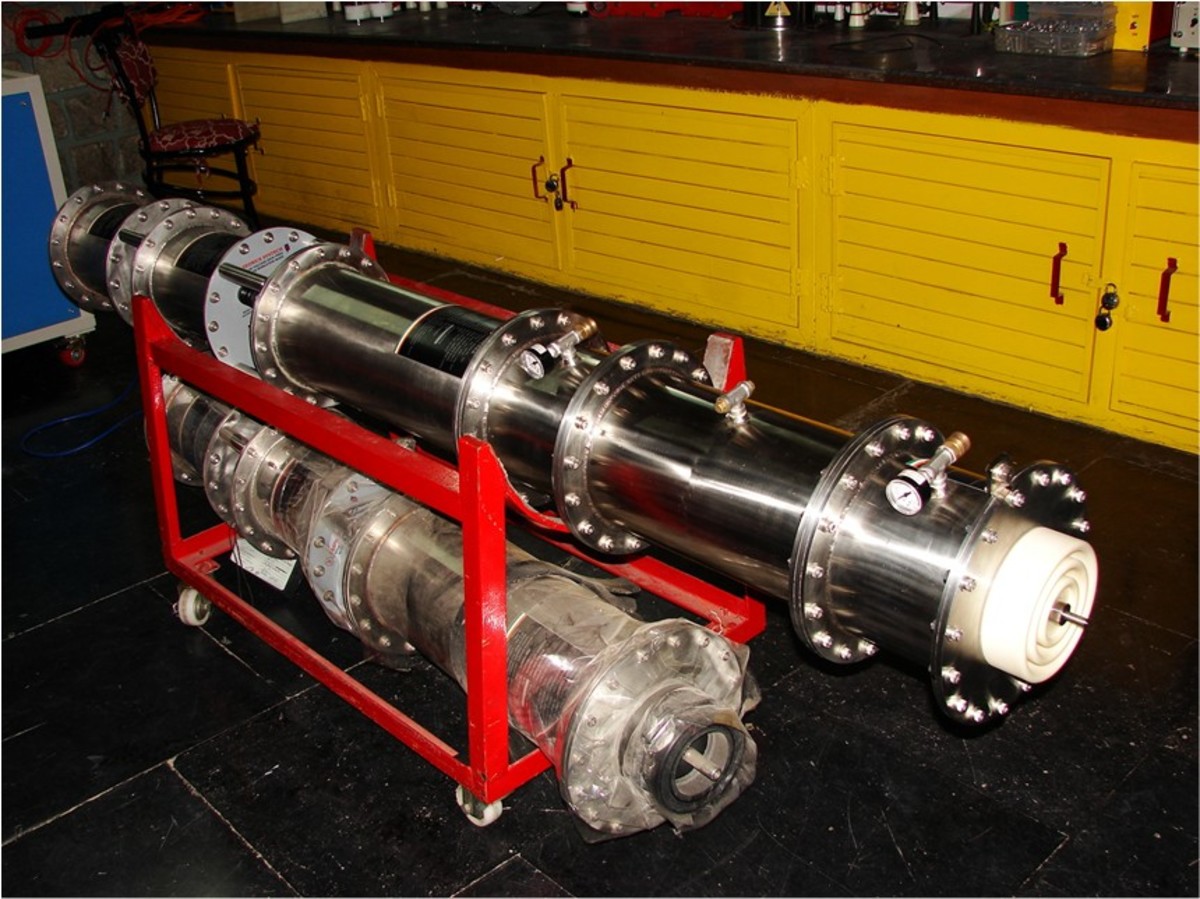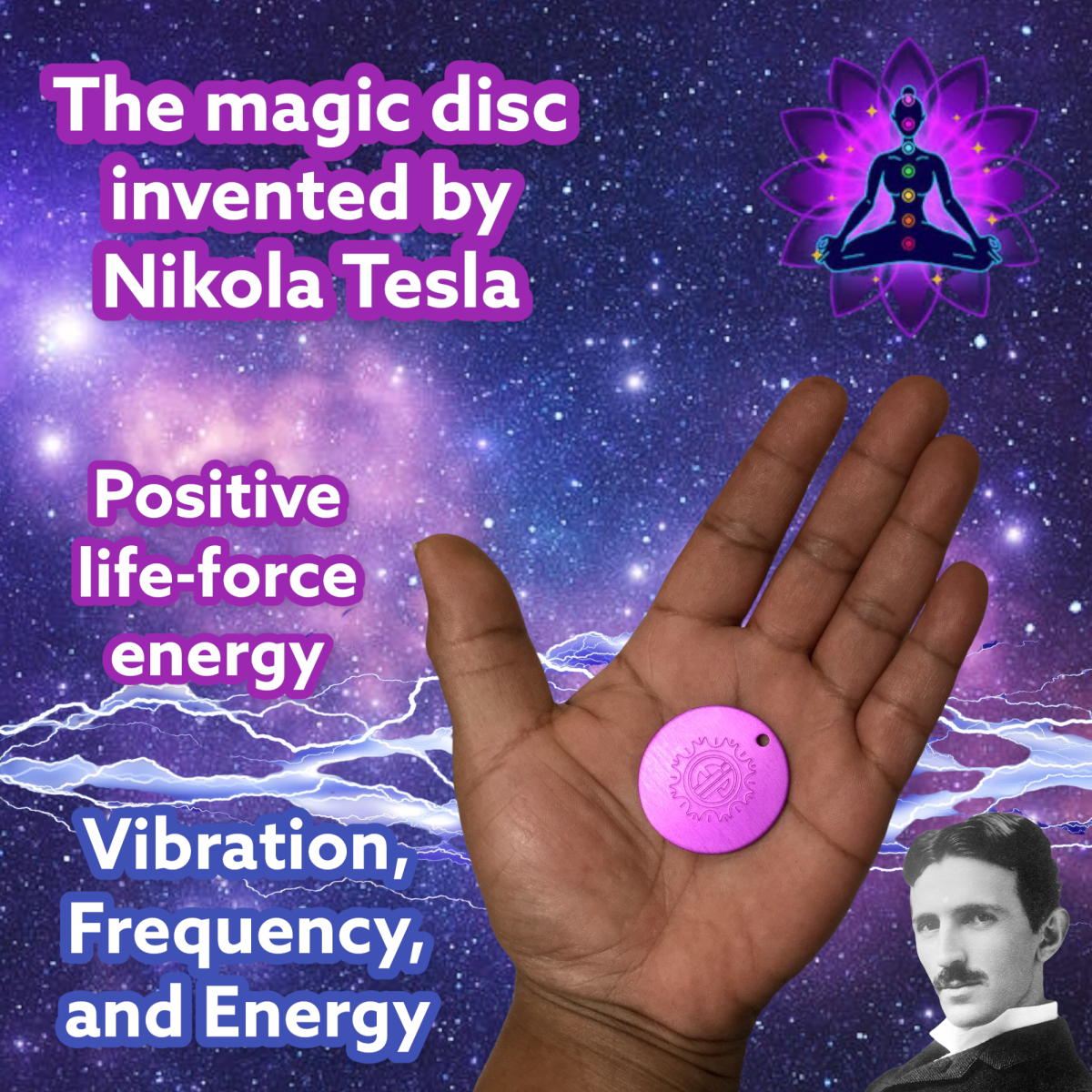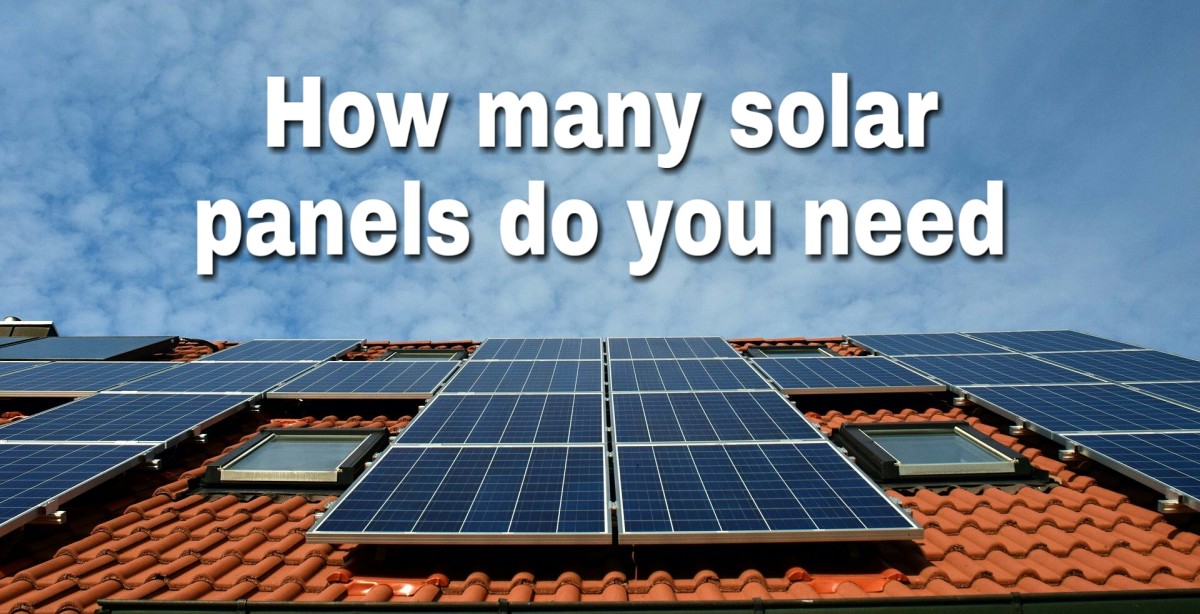How Solar Cells Work
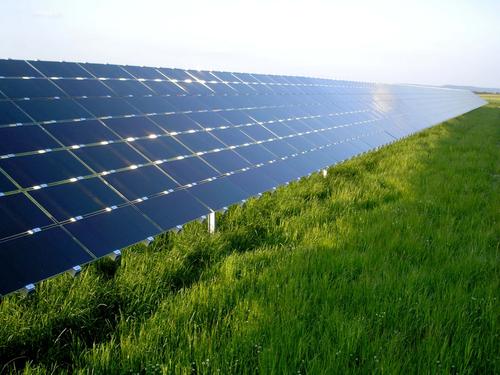
Alternative energy has become an increasingly popular topic since the 1973 Oil Crisis when members of the Organization of Arab Petroleum Exporting Countries (OAPEC) proclaimed an oil embargo on the United States forcing oil prices to skyrocket. Since then technology has attempted to exploit natural, renewable resources as sources of energy, such as wind, geothermal, hydroelectric, biomass, etc. It wasn't until recently, however, that green technology started gaining ground and became a national trend. Maybe filling the tank in your car at a cringeworhty $3-$4 per gallon (almost triple the price of gas when I first got my license just 9 years ago) had something to do with it. Or maybe it is an increasing knowledge of global environmental change and how humans are irrevocably changing this planet for the worse. Whatever the reason may be, green is the new thing and with supplies of oil and natural gas dwindling every day, renewable technology is the key to our future.
Green technology has primarily been successful in the generation of electricity. There are seven fundamental methods of generating electricity: static, electromagnetic, chemical, photoelectric, nuclear, piezoelectric and thermoelectric. Currently,However there are currently only two ways to produce electricity commercially: electro electricity is produced commercially only three of those ways: nuclear, electromagnetic (wind, hydro, and coal energy), and via the photoelectric process (solar energy).
Solar energy is the most abundant renewable form of energy on Earth and the current amount of solar energy incident on our planet is enough to not only meet, but exceed, current global energy demands. I talked a little bit in my last post about why solar energy isn’t more widely used, the two main reasons being that it is expensive and inefficient, and in places like WNY, where I live, I literally have not seen the sun peak out behind layers and layers of clouds in probably weeks and I am not exaggerating.
While making the snow go away and the sun to shine all year in WNY would not be only extremely detrimental to Earth and the survival of all its species, it’s also impossible. I will have to suffer another dreary and miserable season of sunset at 4pm and back breaking shoveling. However, new research may be the solution to the problem of expensive and inefficient solar cells.
But first, what is a solar cell?
Examples of Incident Solar Radiation
Location
| Solar Radiation in July
| Solar Radiation in Jan.
|
|---|---|---|
Northern Europe
| 4.5-5 kWh/m2
| 0.5 kWh/m2
|
Southern Europe
| 6-7.5 kWh/m2
| 1.5-2 KWh/m2
|
Examples of solar radiation incident on Earth in kilowatt-hours per meter squared per day. 5 kWh is enough energy to heat the water for a rather hot bath. Source: Renewable Energy: Power for a Sustainable future by Godfrey Boyle.
Wave-Particle Duality
Quantization
History of Photovoltaics
Before we continue, I am going to assume two things: (1) that you know what an electron is, and (2) that you know that the flow of electrons is, by definition, an electric current i.e. electricity. With that being said, the next thing you must know is that a solar cell is a photovoltaic. Photovoltaics (PVs) describes the generation of electricity from light. In other words, for our purposes, photovoltaics is simply a fancy word for solar cell, so don't be fooled by the terminology.
The discovery of primitive PVs is credited to a French Physicist name Edmond Becquerel who in 1839 discovered during his experiments that the voltage in his ‘wet cell’ battery increased when its silver plates were exposed to sunlight. That's great, but what did that mean? What was next? Absolutely nothing. The discovery was just another notation in the scientific community until a very important discovery more than six decades later.
That very important discovery that paved the way for PVs was made in 1905 by one of the world’s most famous scientists. The discovery was the photoelectric effect theororized by the one and only Albert Einstein. Many people think that it was his theory of relativity that won him the Nobel Prize, but it was actually his work on the photoelectric effect that won Einstein the coveted award.
One way to produce commercially used electricity is through the photoelectric effect. But what is the photoelectric effect? The photoelectric effect occurs when electrons are emitted from matter as a result of absorption of electromagnetic radiation, creating a current. That's just a mouthful, isn't it? So let me try to break that down.
The sun emits energy, that travels through space and time until it hits Earth. You may call this light, but scientists call this electromagnetic radiation. Visible light, however, is just a small part of the electromagnetic radiation spectrum that also includes radio and mircowave, as well as ultraviolet (UV), x-ray and gamma ray. This energy travels through space as a wave until millions of years after being emitted from the sun, it hits an object on Earth. Once the light hits an object, it can cause the electrons to free themselves from the object and be emitted. This, in a nutshell, is a photolectric effect.
But how does this happen? How does electromagnetic radiation cause an electron to be emitted from an object? In 1887, Heinrich Hertz was the first person to observe the photoelectric effect, but he declined to attempt to describe a theory that would explain his experiment. In 1905, Albert Einstein proposed a simple theory to explain the phenomena. Light, he realized, was quantized. Up until this point, people thought light was just a wave. However, Einstein postulated that light wasn't just waves, but it was also particles, a groundbreaking discovery that is what we now call the wave-particle duality. These particles are called photons. When photons hit an object, they transferred all of their energy to an electron in the object during the collision causing the electron to be emitted from the matter. I like to think of it as a joust. You have two knights on their horses, one is a photon, the other is an electron. When the photon knight hits the electron knight with his lance all of the energy from the photon is transferred to the electron knight causing his to be 'emitted' from his horse.
Robert Millikan, an American physicist, thought Einstein was full of crap, so for the next ten years he diligently worked to disprove Einstein’s theory only to be disappointed when he provided the experimental data needed to prove the theory in 1916. (He can't be too mad, though, as is work on the photoelectric effect earned him a Nobel Prize as well). The photoelectric effect is the driving force behind photovoltaics (PV).
I highly suggest watching the videos I posted on both wave-particle duality and quantification from Quantum Made Simple at http://www.toutestquantique.fr/. The animations are a good way to visualize the abstract concepts. In the first video, what they call a quantum object is a representation of wave-particle duality, an object that has the properties of both.
Photoelectric Effect

How an Inorganic Semiconductor Photovoltaic Works
It wasn’t until the late 1940s to early 1950s that the breakthrough occurred that set in motion the development of modern day, high-efficiency solar cells. It was the discovery of the doping of semiconductors that changed the course of history.
Semiconductors are non-metallic materials, such as germanium and silicon, whose electrical characteristics lie between those of conductors, which offer little resistance to the flow of electric current, and insulators, which block the flow of current almost completely. The characteristic physical property of a semiconductor is its ability to increase electrical conductivity with increasing temperature. Doping is a process where tiny quantities of carefully selected impurities are deliberately diffused into an extremely pure crystalline semiconductor (usually silicon).
Now that we got that out of the way, you need to know there are a lot of things that go on inside an inorganic semiconductor photovoltaic, and a lot of basic chemistry that I've already cut out and won't go into detail about (like how the electronic bands of metals are different from insulators and semiconductors) but I will do my best to stick to the basics because this is not a hub for scientists, this is a hub for everyone. The basic and most common PV consists of a junction between a p-type and n-type semiconductors and are usually made of Silicon (Si). An n-type, or negative, semiconductor is usually made from crystalline silicon that has been doped with small impurities, such as phosphorus, that cause a surplus of free electrons. A p-type, or positive, semiconductor, on the other hand is usually made from crystalline Si that has been doped with small impurities, usually boron, so that there is a deficit of free electrons, or ‘holes.’ (If you want to know more about this, comment and I will write another hub explaining holes in greater detail.) The joining of these two types of semiconductors creates a p-n junction that sets up an electrical field.
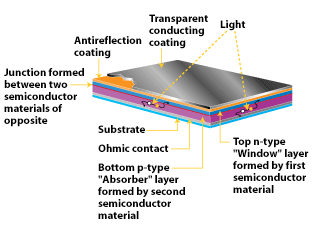
When light falls on the p-n junction, the photons transfer their energy to some of the electrons and promote them to a higher energy level (*cough*the photoelectric effect *cough*). Think of it as a parking garage with two floors. Before the light energy hits, all of the cars are parked on the lowest floor in the basement. There are no free parking spots in the basement and none of the cars are allowed to leave. After the light hits, however, several of the cars are promoted to the floor above. The cars in the basement are now free to move around inside the basement, while the cars on the first floor are also free to move around, however they are now also free to leave the building. In this case, the promoted electrons, or excited electrons become ‘free’ to conduct an electric current by moving through the material. As they move through the material, they are also leaving a positively charged hole behind, which can also move. Holes, in the p-type are attracted to electrons in the n-type and can combine to form an electron-hole pair.
The net effect is the formation of a reverse electric field. The p-type semiconductor becomes negative and the n-type semiconductor becomes positive. Under the influence of the reverse electric field at the junction, the electrons will tend to move back into the n-region where they originated and the holes back to the p-region. This flow of electrons to the n-region is an electric current that generates a potential difference or electromotive force. This force drives the electrons out of the semiconductor into a metallic contact on the top of the solar cell and through a load in an external circuit to do electrical work. This electrical work is electricity. In order to produce power, however, the solar cell must generate voltage as well as current provided by the flow of electrons. However, the p-n junction naturally produces a small voltage right where the two layers meet, also called the depletion zone. These process combined are considered the photovoltaic effect, where two dissimilar materials in close contact produce an electrical voltage upon exposure to light.
There is a lot more that goes into a PV cell. There is a lot of math, and a lot of drawings of energy levels and band gaps and directions in which electrons and holes move to make all of this happen. I took an entire class on just those things; on how the electrons and holes move, the voltage created by junctions variant on the doping of each semiconductor, so on and so forth. It is interesting, but not within the realm of this blog.
Semiconductor PVs were first used in 1958 to power a small radio transmitter in the second US Space satellite, Vanguard I, and have not only seen rapid progress, but have also seen rapid growth for both industrial and commercial purposes.
However, there is a theoretical limitation of inorganic semiconductor photovoltaics. In 1961, William Shockley and Hans Queisser first calculated the Shockley-Queisser approximation. Shockley and Queisser assumed that an electron-hole pair must annihilate at some point and that during this annihilation light would be emitted. However, that is the ideal case and does not always happen. Generally the extra energy of the excited proton is wasted as heat. They also postulated that only electrons of a certain energy would be able to produce power. As such, a vast amount of energy is wasted. The Shockley-Queisser limit is then calculated by examining the amount of electrical energy that is extracted per photon of incoming sunlight. Shockley and Queisser calculated a limit of only 31%. What this means, that even under the best conditions possible, an inorganic semiconductor PV can only hope to achieve a 31% efficiency and it can never be any better than that. This limit is fundamental to solar energy production and has fueled the research of various alternatives to semiconductors, such as Quantum Dots and Organic PVs, which I will talk about in greater detail in another hub to follow.
Now that you know how a solar cell works, use your new knowledge to impress your friends!




